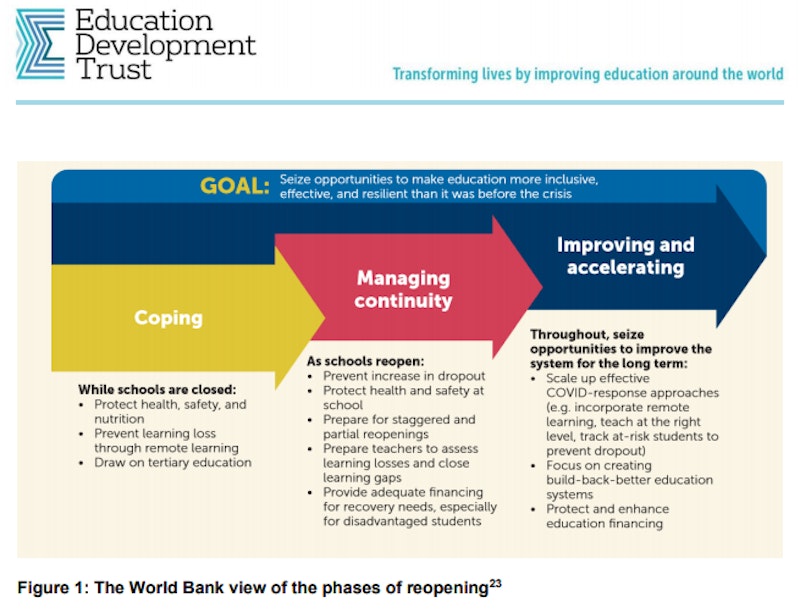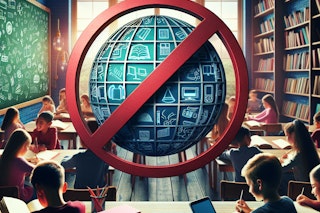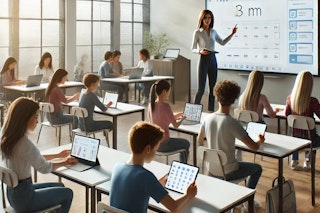Plans for school reopening: an international review
Summer is about to end and it is not very clear what measures the education sector will take to reopen schools and universities. This is a worldwide situation since the coronavirus affected in almost every country. At present, experts are working against the clock to develop alternative solutions for a problem that concerns every student and parent. The Edtech Hub recently published a report documenting “An international review of plans for school reopening” that can help explain a broad spectrum of approaches to beginning of the academic year in high, middle and low-income countries.
Check out the article When Practising Social Distancing, How Should An Ideal Classroom Look Like?
Key Findings Of The Report
The majority of the governments looking after school reopening are interested in the short-term challenge of applying health and hygiene standards at the school level, instead of paying attention to the long-term challenge of “building back better”.
In some places, schools have reopened or are about to reopen, governments are very aware of how serious a risk it is that schools start being establishments where the virus can be transmitted. The advice on these matters of international organizations such as the World Bank and UNESCO have been taken into consideration and is integrated in policies and practices.
Many countries cautiously assessed the capacity of the school to reopen with brand new safety and health rules. Not in all countries but in some, key stakeholders have been fully consulted.
In most places, protocols for social distancing and hygiene have been clearly articulated. The World Bank has asked professional policymakers to “build back better after COVID-19”. The EdTech Hub’s investigations indicate that the agenda of transformation and the need to build long-term resilience require much more attention.

The political context of each country has had significant influence in the approach of reopening schools.
Arrangements about reopening schools attract a high level of public attention and are extremely political. Decision making in democratic countries has generally been controversial and questioned.
In most countries the decisión to reopen is made by the president or the prime minister instead of by ministries of health or education. For example, the recommendation of the Ministry of Education in the Philippines was to reopen in August of 2020, but that decision was overruled by the president who delayed the reopening indefinitely.
However, in other countries dealing with similar cases, national governments have reached very different conclusions. Cambodian schools will open, at the earliest, in November, 2020, while in Laos schools reopened in May, 2020. Another big issue is related to different student groups and which of them should have the priority regarding going back to school first.
Many policymakers abandoned the challenge to offer a fair blended learning opportunity in reopened schools, because of the concerns in relation to the immediate need to cover safety and health.
It has been hard for policymakers to dedicate much attention to problems related to equity and access in the reopened schools because the main concern was directed to health and hygiene.
Many school systems have reopened or will reopen with restrictions in the access to face-to-face teaching, according to Education Week, “As of August 18, 20 of the 25 largest school districts in the United States are choosing remote learning only as their back-to-school instructional model, affecting over 4.3 million students”, using some kind of shift or rotation system.
Policymakers take for granted that students will have access to combined learning opportunities. The Hawaii Department of Education offers schools three different models: face to face learning, blended rotation and a hybrid (face to face and blended rotation). The time reduction in class will, it is hoped, be compensated for by extra learning at home. However, “blended” learning is associated with many risks.
There hasn't been enough attention paid at the national and provincial levels to the role of technology in the new era of blended learning. The “digital divide” is still very present in most countries and it will be a huge challenge for students with little or no resources to catch up with online learning processes.
In a similar way, low-income students will face more barriers to engage at home when the television or the radio are their main companions to supplement classroom time. This is why teachers all over the globe will need support and training if they want to be effective handling combined modalities of blended learning… and students will need connectivity and other digital learning resources.
The constant challenges of reopening schools in low-income countries will not stop, meaning schools will need new alternatives and not only the change of procedures already being implemented in some high-income countries.
Before the pandemic, low-income schools often had to face the problem of overcrowded classrooms. Now, on top of that, schools have to manage the balance between overcrowded classrooms with the challenge of school reopening in a health crisis that requires even less crowded classrooms.
In resource-poor contexts, the blended learning model is especially problematic: constant cleaning and social distancing in school is extremely hard and home learning is not presently possible in many families. The procedures implemented in high-income countries that are likely to guarantee the wellbeing and health of students and teachers during school reopening will be very hard to use in poorer settings.
The access to online learning and educational broadcasting for many low-income countries is yet another big barrier. Different alternatives are required and it should not simply be a less sophisticated version of the blended learning model that has been implemented in high-income countries.
Hardly any low-income countries have reopened their schools because of the difficulties created with the state of the epidemic.
The first stage of the reopening of schools was concentrated in high-income and middle-income countries. This represents two main patterns; the spread of covid and the struggles faced by low-income countries as they try to reach the hygiene and health levels needed for safe reopening.
The virus started to affect Asian and European countries first and these territories are the ones with most of the early cases of school reopening. The leaders of some low-income countries are now thinking about school reopening, but are careful not to act precipitately because it's very hard to assure social distancing and hygiene in a resource-poor environment.
About the author
About EdTick
EdTick is a platform that helps educational institutions connect with academic software. Join our Beta program and help us shape the future of educational technologies!



